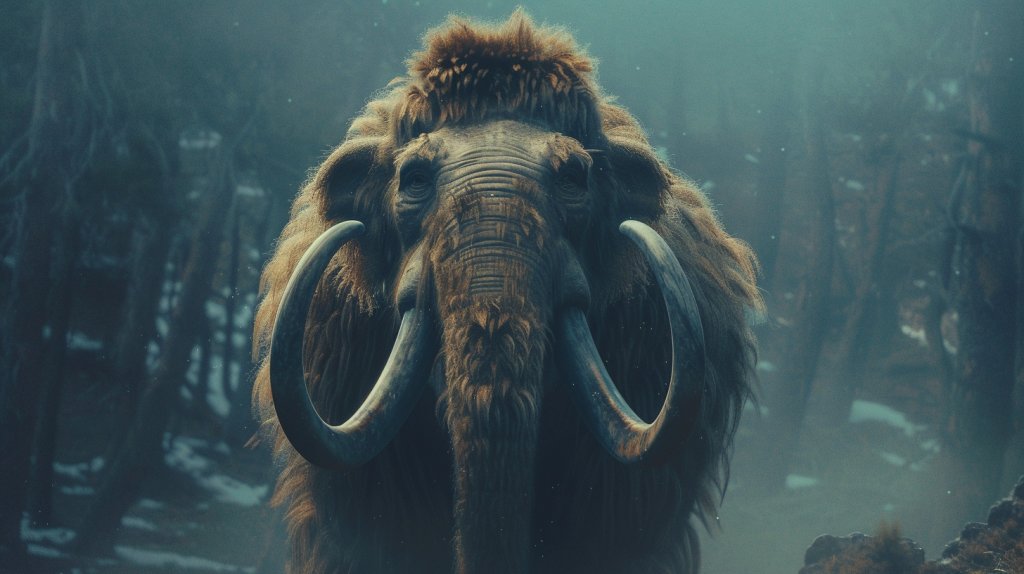De-extinction, the process of bringing extinct species back to life, is no longer just a dream from Jurassic Park. Scientists are making real progress in this field, blurring the line between science fiction and reality. Here are 15 mind-blowing facts about de-extinction that show how close we are to reviving lost species.
The Pyrenean Ibex Was Briefly Un-Extinct
In 2003, scientists successfully cloned a Pyrenean ibex, a species of wild goat that had gone extinct. The clone lived for only a few minutes, but it marked the first time an extinct animal was brought back to life. This achievement opened the door for future de-extinction efforts and showed that bringing back lost species might be possible.
Woolly Mammoths Could Roam Again

Scientists are working hard to bring back the woolly mammoth. They’re using DNA from well-preserved mammoth remains found in Siberia. By combining this ancient DNA with genes from modern elephants, researchers hope to create a hybrid animal that looks and acts like a woolly mammoth. If successful, we might see these ice age giants walking the Earth again in our lifetime.
De-extinction Isn’t Just About Dinosaurs
While movies often focus on bringing back dinosaurs, real de-extinction efforts target more recently extinct species. Scientists are working on reviving animals like the passenger pigeon, the Tasmanian tiger, and the gastric-brooding frog. These species went extinct in the last few hundred years, making their DNA easier to recover and work with.
CRISPR Technology Is Key
CRISPR, a powerful gene-editing tool, is crucial for de-extinction efforts. This technology allows scientists to precisely edit DNA, inserting genes from extinct species into the genomes of their closest living relatives. CRISPR makes it possible to recreate extinct species’ traits in modern animals, bringing us closer to true de-extinction.
De-extinction Could Help Endangered Species
The techniques used in de-extinction could also help save endangered species. By understanding how to manipulate and preserve genetic material, scientists can boost genetic diversity in small populations. This knowledge could be crucial in preventing more species from going extinct in the future.
Bringing Back Extinct Plants Is Easier
De-extinction isn’t just for animals. Scientists have successfully revived an extinct plant species called Silene stenophylla from 32,000-year-old seeds found in Siberian permafrost. Plants are often easier to revive because their seeds can remain viable for long periods, and they can be cloned more easily than animals.
The Passenger Pigeon Project Is Underway
Once the most abundant bird in North America, the passenger pigeon went extinct in 1914. Now, scientists are working to bring it back. They’re using DNA from museum specimens and modifying the genes of band-tailed pigeons, the passenger pigeon’s closest living relative. The goal is to create birds with passenger pigeon traits and behaviors.
De-extinction Could Restore Ecosystems
Bringing back extinct species isn’t just about the animals themselves. Many extinct species played crucial roles in their ecosystems. For example, woolly mammoths helped maintain the Arctic grasslands. By reviving these species, scientists hope to restore lost ecosystem functions and improve biodiversity.
Ethical Debates Surround De-extinction
The de-extinction field raises many ethical questions. Some argue that we have a moral obligation to bring back species that humans drove to extinction. Others worry about the welfare of resurrected animals and the impact on existing ecosystems. These debates are shaping the future of de-extinction research and policy.
De-extinction Could Fight Climate Change
Some scientists believe de-extinction could help combat climate change. For instance, bringing back woolly mammoths to the Arctic could help preserve permafrost by trampling snow and allowing cold air to reach the ground. This could prevent the release of greenhouse gases trapped in the permafrost.
The Thylacine Might Return
The thylacine, or Tasmanian tiger, is another candidate for de-extinction. This unique marsupial went extinct in 1936. Scientists have successfully sequenced its genome and are exploring ways to reintroduce its genes into its closest living relative, the numbat. If successful, this could bring back one of Australia’s most iconic extinct animals.
De-extinction Techniques Vary
Scientists use different methods for de-extinction depending on the species and available genetic material. These include cloning, genetic engineering, and selective breeding. Each method has its own challenges and potential, showing how complex and varied the field of de-extinction really is.
Museum Specimens Are Crucial
Natural history museums play a vital role in de-extinction efforts. Their preserved specimens provide the genetic material scientists need to study extinct species. DNA recovered from these specimens is crucial for understanding the genetic makeup of extinct animals and planning de-extinction projects.
De-extinction Could Boost Medical Research
The techniques developed for de-extinction could have unexpected benefits for medical research. By learning how to manipulate genes and create hybrid animals, scientists might discover new ways to treat genetic diseases or grow organs for transplants. De-extinction research could lead to breakthroughs in human health.
The First De-extinct Species Might Arrive Soon
While full de-extinction hasn’t happened yet, scientists are making rapid progress. Some experts believe we could see the first successfully de-extinct species within the next decade. This could be a hybrid animal with traits of an extinct species, or a fully revived extinct plant. The age of de-extinction might be just around the corner.
